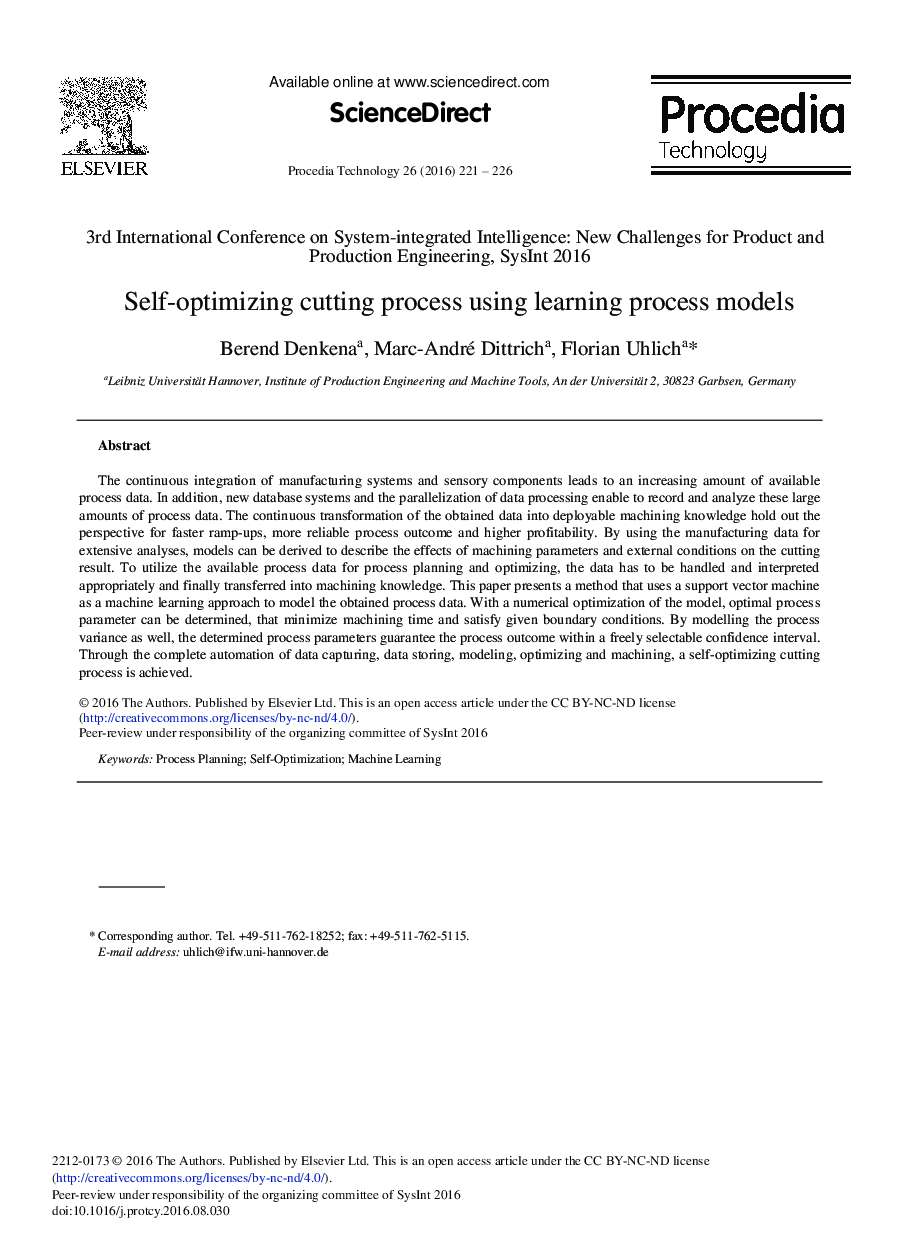| Article ID | Journal | Published Year | Pages | File Type |
|---|---|---|---|---|
| 4962454 | Procedia Technology | 2016 | 6 Pages |
The continuous integration of manufacturing systems and sensory components leads to an increasing amount of available process data. In addition, new database systems and the parallelization of data processing enable to record and analyze these large amounts of process data. The continuous transformation of the obtained data into deployable machining knowledge hold out the perspective for faster ramp-ups, more reliable process outcome and higher profitability. By using the manufacturing data for extensive analyses, models can be derived to describe the effects of machining parameters and external conditions on the cutting result. To utilize the available process data for process planning and optimizing, the data has to be handled and interpreted appropriately and finally transferred into machining knowledge. This paper presents a method that uses a support vector machine as a machine learning approach to model the obtained process data. With a numerical optimization of the model, optimal process parameter can be determined, that minimize machining time and satisfy given boundary conditions. By modelling the process variance as well, the determined process parameters guarantee the process outcome within a freely selectable confidence interval. Through the complete automation of data capturing, data storing, modeling, optimizing and machining, a self-optimizing cutting process is achieved.
